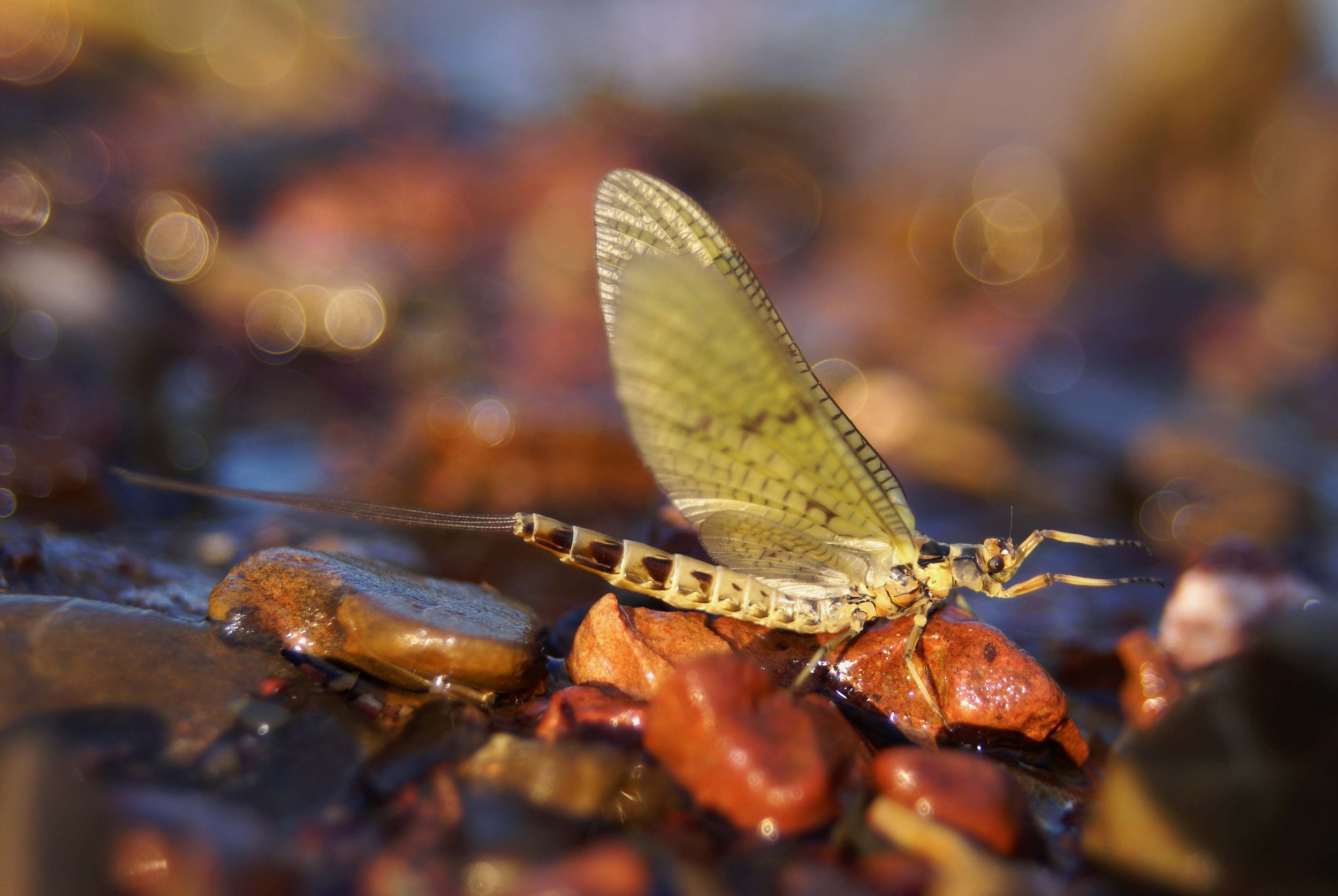
Riverflies Overview
Riverflies are invertebrates that spend most of their life cycle in a river, stream, pond or lake. Along with other freshwater invertebrates, they are at the heart of the freshwater ecosystem and are a vital link in the aquatic food chain. Their common characteristics of limited mobility, relatively long life cycle, presence throughout the year and specific tolerances to changes in environmental conditions make them useful indicators of water quality, pollution, siltation and low flows.
Visit Riverfly Monitoring Initiative (RMI) for information on how citizen scientists are playing an instrumental role in protecting the health of their local rivers by monitoring their riverfly populations.
RMI focuses on three key groups of riverflies: the up-wing flies or mayflies (Ephemeroptera), caddisflies or sedges (Trichoptera) and stoneflies (Plecoptera).
Riverflies – the canaries of our rivers
The health of a river is dependent on many factors, three primary ones being water quality, habitat and flow. Riverfly populations reflect the health of our rivers and still waters. They are sensitive indicators of water quality and are referred to as the rivers 'canary'.
As an important food source for many other creatures in a river, a drop in the number of riverflies has a knock-on effect on the entire ecosystem. Factors that may have a detrimental impact on riverfly populations include:
Habitat loss Many ponds have been lost in recent years through in-filling, draining or natural succession. Modification of river channels, e.g. straightening, causes the loss of critical bank-side and shallow in-stream habitats.
Point source and diffuse pollution
Agricultural runoff, high in nutrient levels Excess nutrients may lead to large algal growths, which smother vegetation and reduce dissolved oxygen levels, creating unfavourable conditions for riverflies. Insecticides running into waterways also have an impact on aquatic invertebrates — a teaspoon of the pesticide cypermethrin can devastate all life to the volume of water equivalent to an Olympic-size swimming pool.
Siltation Soil erosion may lead to unnaturally high levels of silt in watercourses, which smother the river bed.
Low flows Reduced flow (due to climatic causes or abstraction) can reduce habitat availability and cause pollutants to become more concentrated.
Climate change and temperature variation
Light pollution Artificial light may cause disorientation in adult riverflies, attracting them away from their natural bankside habitat.
Priority species
Eight species of riverfly qualified for conservation status on the Biodiversity Action Plan (BAP) Species list. Inclusion on the list meant that there was a government commitment to support conservation measures for these species. The BAP was succeeded by the Post-2010 Biodiversity Framework, and the original species list was used to draw up Priority Species lists for each country of the UK. The eight BAP riverfly species all remain on at least one of these devolved lists. They are as follows:
Ephemeroptera: Nigrobaetis niger (Southern Iron Blue), Potamanthus luteus (Yellow Mayfly).
Plecoptera: Brachyptera putata (Northern February Red), Isogenus nubecula (Rare Medium Stonefly).
Trichoptera: Glossosoma intermedium (Small Grey Sedge), Hagenella clathrata (Window Winged Sedge), Hydropsyche bulgaromanorum (Grey Flag), Ironoquia dubia (Scarce Brown Sedge).
Additionally, there are seven mayfly species, four caddisfly species and three stonefly species found on Northern Ireland’s Priority Species list.
Studying riverflies
Collecting
The aquatic stages of riverflies are easy to collect. Kick sampling is the most efficient method in running water, whilst in standing water a net can be swept through submerged vegetation, or the substrate can be disturbed and the net swept through the disturbed water. Adult riverflies can be collected by examining bankside trees and other vegetation. Alternatively, adults can be caught as they swarm near the water.
Identification
Identification can be done to different levels, such as family or species. Whereas species-level identification may require lab-based study and dissections, Riverfly Partnership volunteers are trained to recognise certain general groups of riverfly larvae that are easily identifiable at the bankside, before returning them to the water. This can provide a very useful insight into the health of a river.
Questions on riverflies
If you have specific questions concerning riverflies, email Craig Macadam from the Riverfly Recording Schemes.
Images on this page: John Bell, Adam Rawson (all Flickr). H. Ferguson, The Riverfly Partnership.



